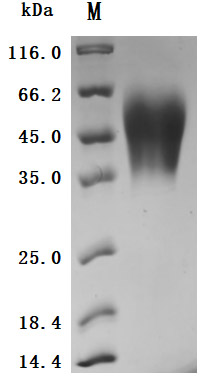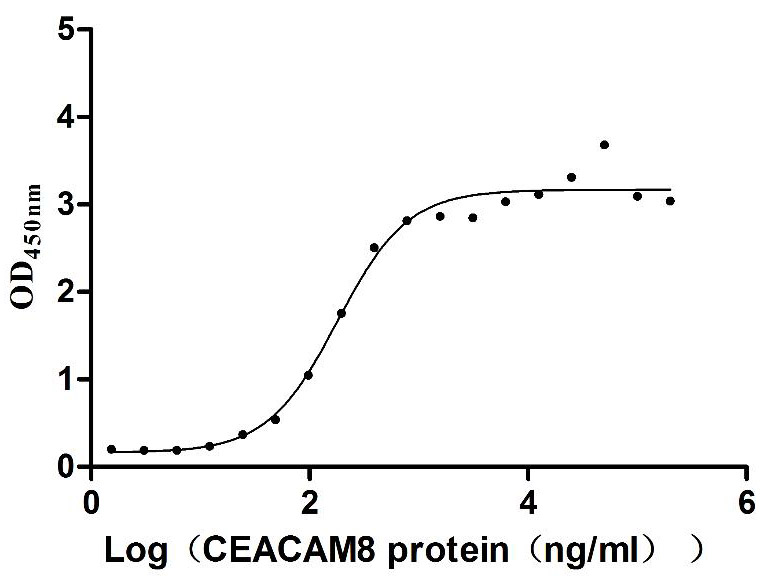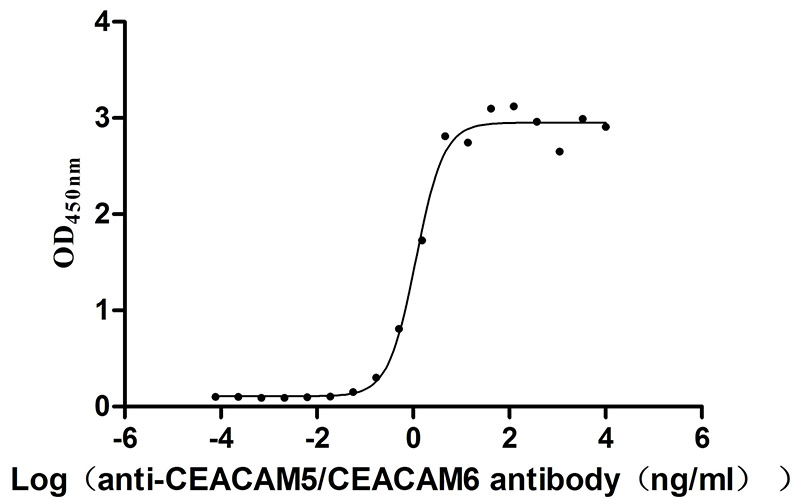This Human CEACAM6 recombinant protein was produced in mammalian cell, where the gene sequence encoding Human CEACAM6 (35-320aa) was expressed with the C-terminal 10xHis tag. The purity of this CEACAM6 protein was greater than 95% as determined by SDS-PAGE. The activity was validated.
CEACAM6, which belongs to the carcinoembryonic antigen (CEA) family, is highly expressed in various solid tumors such as breast cancer, pancreatic cancer, colon cancer, and non-small cell lung cancer. CEACAM6 molecules can promote tumor metastasis, invasion and angiogenesis, inhibit tumor apoptosis, increase tumor drug resistance, and its high expression often indicates poor prognosis of patients. The specific antibody against this molecule can significantly inhibit tumor invasion and metastasis, increase apoptosis, and increase the sensitivity of cells to chemotherapy drugs. Therefore, using CEACAM6 as a target is of great significance for the screening of tumor cells and the development and utilization of anti-tumor antibody drugs.






